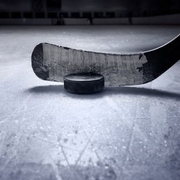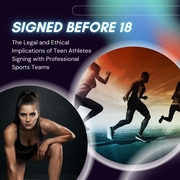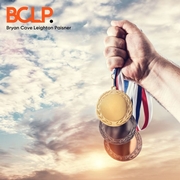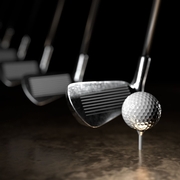Welcome!
Click here to submit a Blog post.
- From Loophole to Lockdown: The Evolution of LTIR Cap Relief in the NHL
-

-
The salary cap has shaped professional sports since its debut in the NBA during the 1984-1985 season, with other leagues like the NFL and the NHL following suit.[1] However, no league’s cap has had as profound an impact on competitive balance as the NHL’s, primarily because of how low it is relative to the market value of the players and the size of the team. One of the more complex mechanisms that has emerged under the hard cap system is the use of Long-Term Injury Reserve (“LTIR”), which teams have used strategically to navigate, and at times to circumvent, cap restrictions
- By Corey Spector, Sports Lawyers Association, Hockey Subcommittee Member
- Comments (0)
- The Cost of Visibility: How NIL & Prop Betting Are Exposing College Athletes to Growing Safety Threats
-

-
Student-athletes today face a growing safety crisis fueled by two converging forces: the rise of NIL monetization and the rapid expansion of legalized sports betting. While NIL has empowered athletes to build personal brands and capitalize financially, it has also dramatically increased their public exposure and corresponding vulnerability to harassment, coercion, and physical threats. At the same time, prop betting markets have incentivized direct harassment tied to individual performance, creating real-time pressure on student-athletes. Despite some NCAA initiatives and limited legislative responses, meaningful protections remain incomplete and dangerously inadequate.
- By Amelia Taylor, SLA NextGen Committee Member
- Comments (0)
- Signed Before 18: The Legal and Ethical Implications of Teen Athletes Signing with Professional Sports Teams
-

-
Professional sports teams are increasingly signing teen athletes as young as 13 to high-value contracts, raising questions about contract enforceability and developmental risks for minors.[1] In 2023, 13-year-old Da’vian Kimbrough became the youngest athlete in the history of American team sports when the Sacramento Republic soccer team signed him to a professional contract. That same year, 15-year-old Melanie Barcenas signed a three-year contract with the San Diego Wave and the National Women’s Soccer League (NWSL), debuting as the league’s youngest athlete ever. Barcenas joined a growing number of teen players advancing their careers to professional levels at ages when most teens are navigating hormonal changes, fitting in, social media, and college admissions.
- By Anavictoria Avila, Esq., SLA Member
- Comments (0)
- Assembling a Gold-Medal Worthy Campaign: Trademark Usage, Advertising and Athlete Sponsorship Considerations During the Games
-

-
What You Need to Know to Avoid Missteps in Olympic Advertising
Most of the world will tune in to watch the best athletes around the globe as they descend upon the world’s biggest stage for sport: the 2024 Summer Olympic Games in Paris. With billions of people cheering their favorite countries and athletes as they compete at the highest level, many will be exposed to the marketing and media campaigns that follow through every medium – from social to streaming. It is no wonder why the Olympics have become an advertising dream for sponsors of the athletes, coaches, trainers, team members, and other official personnel (the “Participants”) attending the 2024 Summer Olympics in Paris.
- By Steve Smith, Jill Chalmers, Ellen Whitehorn, and Madeleine Considine at BCLP
- Comments (0)
- State of Affairs for IP in Sports
-

-
Intellectual property has been a legal area rife with game changing cases in the past several years. This year is no different. This article dives into two recent legal battles - Pennsylvania State Univ. v. Vintage Brand, LLC and Warner Chappell Music v. Nealy - that reshape the landscape of intellectual property in sports. We analyze how these rulings impact everything from team logos on apparel to the music used in highlight reels. The results of these cases will have massive ripple effects for nearly everyone in the sports industry, and interested parties need to take note of what may be coming their way sooner rather than later.
- By Matthew Holt, SLA Member
- Comments (0)
- Good for the Game of Golf? The Merger Heard Round the World
-

-
The PGA TOUR (“Tour”) has decided to do an about-face that is surrounded by controversy. The Tour’s commissioner, Jay Monahan, has been at the center of the debate due to his zero-tolerance stance for LIV Golf (“LIV”). In June of 2023, the world of golf spun into a frenzy due to the rumblings of, and eventual admission of, the intended merger between the Tour, LIV, and DP World Tour.
- By Dwan Samuel
- Comments (0)